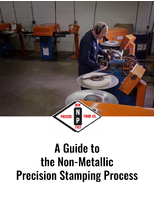How to Select Gas Permeability Test Method
Abstract
The testing principles of differential pressure method and equal pressure method are essentially different and each method has its own advantages in application and data system respectively. This article is to introduce the main characteristics of the 2 gas permeability test methods and provide some instructions when the packaging enterprises, testing organizations or research institutes select test method for gas transmission test.
With the packaging safety of food and drug has drawn more attention recently, the barrier property of the packaging materials also becomes a focused performance index, which could influence the shelf life of the product directly. Therefore the barrier property tests have been also popularized.Â
Generally, each index of barrier properties can be tested with several test methods. The testing principle of each test method is different to some degree, thus, the test data obtained with different method may be not consistent with each other. It is ideal to get a unified data system for data comparison of the barrier property of the materials. For water vapor permeability test, a unified data system could be obtained for different test methods by calibration specified in standards. However, there is no effective way to get a unified data system for gas permeability test at present. Therefore it is critical to select a proper test method when performing gas permeability test.Â
1. Essential Difference between Differential Pressure Method and Equal Pressure Method
Vacuum method is the most representative method of differential pressure method. For vacuum method, single gas permeates through the specimen in single direction which could be considered as self-diffusion and the whole process could be described with Fick law. For equal pressure method (the most widely used one is sensor method), since two kinds of gases exist in the test chamber, the carrier gas (nitrogen) would permeate through the specimen from the lower test chamber to upper test chamber which could influence the permeation of oxygen. It could be known from the above that differential pressure method and equal pressure method are totally different essentially.
2. Advantages and Disadvantages of the Gas Permeability Test Method
2.1 Vacuum Method
With the theoretical support of membrane technology, vacuum method has been always used as the fundamental method for gas permeability test, which is also a universal method in the world. In various international test standards for gas permeability test, vacuum method is usually adopted as the first method.
The main advantages of vacuum method are as follows.
1. It is applicable for multiple test gases including oxygen, carbon dioxide, nitrogen, air and other regular inorganic gases.
2. A small volume of test gas is consumed in test process and there is very few consumable parts equipped with the instrument, so the test cost is quite low.
3. The test theory is mature. This method has found perfect explanation with classic permeation theories e.g. the Fick law. Essential parameters of the materials including solubility coefficient, diffusion coefficient and permeability coefficient could be obtained with this method. It has excellent universality without special stipulation and thus is the first choice of scientific research institutes, universities, colleges and quality inspection institutes.
4. Test efficiency is high. Evacuation is required before the test is started until the vacuum degree of the test chamber reaches the specific level. Therefore, if the specimen is not mounted properly, the operator could find out the problem in process of evacuation and replace the specimen immediately. So the test efficiency is improved effectively.
5. The gas in test chamber should be purified. The whole test chamber is evacuated to below 27Pa before charging the upper test chamber with purified test gas so that impure gases (non-test gases) in test chamber could be completely neglected and corresponding influence can be eliminated. However, the pressure difference of 0.1Mpa exist between the two sides of the specimen, it is rather difficult to perform gas permeability test of package.
2.2 Sensor Method
For sensor method, a equal and constant pressure is maintained on two sides of specimen. Sensor method is suitable for oxygen permeability test of package since the package would not break due to the pressure difference between the two sides of the wall of the package. The integral oxygen permeability test of packages including bottle, bag and box etc. could be tested with this method. However, the types of test gas is required to be extended and the test cost need to be reduced for sensor method.
1. Single test gas type and high test cost. Oxygen sensor is most frequently used in gas permeability test with sensor method. Of course, when oxygen sensor is replaced by carbon dioxide sensor, the instrument can be used to test carbon dioxide permeability of materials. Since nitrogen gas is used as carrier gas, permeability of nitrogen gas cannot be tested with sensor method. However, even if customers plan to test oxygen permeability and carbon dioxide permeability with one same instrument, they should purchase extra carbon dioxide sensor. All the gas sensors are consumption type of which the cost is very high.
2. The calibration interval is quite short. Because gas sensor is consumption type, the calibration factor should be recalibrated regularly. Otherwise, the accuracy of test result could not be guaranteed.
3. There are several kinds of gases existing in test chamber for sensor method. Inverse transmission of carrier gas will affect the transmission of test gas (oxygen gas). Moreover, such influence varies from materials and cannot be quantified. Therefore, sensor method is only applicable to testing of specific property of materials, for example, oxygen (or carbon dioxide) permeability test. It may not applicable to the test of barrier parameters of the materials.Â
3. How to Select Gas Permeability Test Methods
How to select gas permeability test method? Here are some suggestions for the packaging manufacturers, research and testing authorities.First, the selection of test method should meet the requirements of relative regulation or standard. Second, it is necessary for some users with special testing demand to understand the advantages of differential pressure method and equal pressure method respectively. For example, for the container manufacturers, equal pressure method instrument would be the right choice with which integral package test could be realized. If multiple kinds of gases are required to be tested, the differential pressure method instrument should be used. Additionally the test cost of differential pressure method instrument is lower than that of equal pressure method instrument, which should be also taken into consideration by some customers.
Detailed information,pls contact Emily Wu via sales@labthinkinternational.com or visit our website: http://www.labthinkinternational.com/. Â




